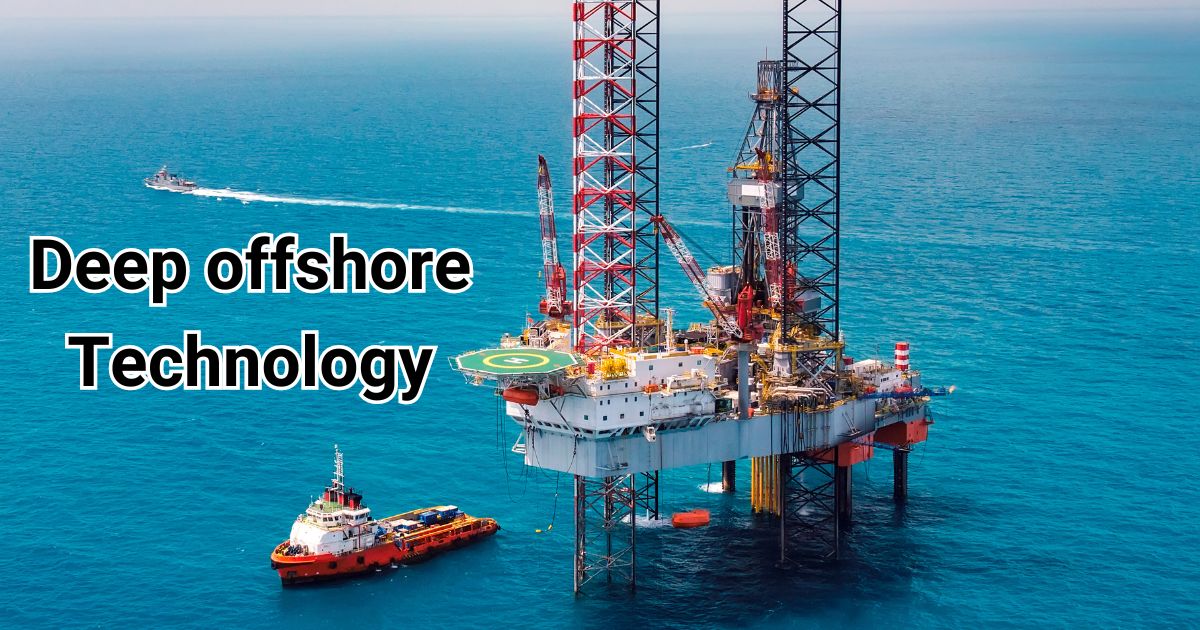Deep offshore technology has revolutionized the way we explore and exploit underwater resources. With the relentless advancement of technology, the possibilities in deep-sea exploration and exploitation are expanding rapidly. This article delves into the future of deep offshore technology, examining its historical evolution, current trends, key players, and future prospects. Understanding these aspects is crucial for appreciating the significant role deep offshore technology plays in our global economy and environmental management.
Historical Background
Evolution of Deep Offshore Technology
Deep offshore technology has evolved dramatically since its inception. The early days of offshore drilling were marked by rudimentary methods and limited capabilities. The 1940s and 1950s saw the introduction of basic offshore platforms, which were primarily used for shallow water exploration. However, the 1970s marked a turning point with the development of advanced drilling techniques and the establishment of the first floating production systems. Over the decades, technology has advanced to enable exploration at unprecedented depths, with innovations such as semi-submersible rigs and submersible vehicles becoming standard.
Milestones in Deep Offshore Exploration
Significant milestones in deep offshore exploration have shaped the industry. The discovery of the North Sea oil fields in the 1970s was a pivotal moment, showcasing the potential of deep offshore drilling. The 1990s brought the introduction of dynamically positioned rigs, allowing for greater precision in drilling operations. More recently, the Deepwater Horizon incident in 2010 underscored the need for improved safety protocols and technological advancements. Each of these milestones has contributed to the development of a more sophisticated and safer deep offshore industry.
Current Trends in Deep Offshore Technology
Latest Innovations
The landscape of deep offshore technology is continuously evolving with innovative solutions. One of the latest trends is the development of ultra-deepwater drilling rigs capable of operating at depths exceeding 3,000 meters. These rigs are equipped with advanced drilling systems and automated technologies that enhance efficiency and safety. Another innovation is the use of remotely operated vehicles (ROVs) for underwater inspections and maintenance. These vehicles are equipped with high-definition cameras and advanced sensors, providing real-time data and reducing the need for human intervention in hazardous environments.
Emerging Technologies
Emerging technologies are set to further transform the deep offshore industry. Artificial intelligence (AI) and machine learning are increasingly being integrated into offshore operations, improving predictive maintenance and optimizing drilling processes. Additionally, advances in materials science are leading to the development of more durable and resilient equipment capable of withstanding extreme underwater conditions. The use of autonomous underwater vehicles (AUVs) is also on the rise, offering enhanced capabilities for deep-sea exploration and data collection.
Key Players in the Deep Offshore Technology Sector
Major Companies Leading the Way
Several major companies are at the forefront of deep offshore technology. Industry giants like ExxonMobil, BP, and Chevron have made substantial investments in deepwater projects, driving technological advancements and innovation. These companies are known for their extensive experience and expertise in managing complex offshore operations. Additionally, specialized engineering firms such as Schlumberger and Halliburton play a crucial role in developing and implementing cutting-edge technologies for deep offshore exploration and production.
Notable Research Institutions and Their Contributions
Research institutions play a vital role in advancing deep offshore technology. The Woods Hole Oceanographic Institution (WHOI) and the Scripps Institution of Oceanography are leading centers for marine research, contributing to the development of new technologies and methodologies for deep-sea exploration. These institutions collaborate with industry partners to conduct research on underwater ecosystems, materials science, and robotics, driving innovation and improving the safety and efficiency of deep offshore operations.
Technological Advancements
Cutting-Edge Drilling Techniques
Cutting-edge drilling techniques are revolutionizing deep offshore exploration. One notable advancement is the development of advanced blowout preventers (BOPs) that enhance safety during drilling operations. These BOPs are designed to withstand high pressures and prevent uncontrolled releases of oil or gas. Additionally, advancements in drilling automation are improving the accuracy and efficiency of drilling processes. Automated systems can now monitor real-time data, adjust drilling parameters, and predict potential issues, reducing the risk of costly and dangerous incidents.
Enhanced Submersible Vehicles
Enhanced submersible vehicles are playing a crucial role in deep offshore technology. These vehicles are designed to operate at extreme depths and withstand high pressure. Advances in materials and engineering have led to the development of more robust and versatile submersibles capable of conducting complex tasks such as underwater construction, maintenance, and research. Equipped with high-resolution imaging systems and advanced navigation tools, these vehicles provide valuable data and insights that are essential for deep-sea exploration and resource management.
Advanced Remote Sensing Technologies
Advanced remote sensing technologies are transforming the way we monitor and manage deep offshore environments. Satellite-based remote sensing systems and underwater sensors provide real-time data on ocean conditions, environmental changes, and equipment performance. These technologies enable proactive management of offshore operations, allowing for early detection of potential issues and reducing the risk of environmental incidents. The integration of remote sensing data with predictive analytics is enhancing our ability to make informed decisions and optimize offshore operations.
Environmental Considerations
Impact of Deep Offshore Technology on Marine Ecosystems
Deep offshore technology has a significant impact on marine ecosystems. The exploration and extraction of underwater resources can disrupt delicate ecosystems and affect marine life. Oil spills, noise pollution, and habitat destruction are some of the environmental challenges associated with deep offshore operations. It is essential to implement robust environmental management practices and conduct thorough impact assessments to minimize these effects. By adopting environmentally friendly technologies and practices, the industry can reduce its footprint and contribute to the preservation of marine ecosystems.
Strategies for Minimizing Environmental Risks
To minimize environmental risks, the deep offshore industry is adopting various strategies. One approach is the use of advanced spill prevention and response technologies, such as containment systems and oil recovery devices. Additionally, companies are investing in research to develop more sustainable drilling practices and reduce the environmental impact of offshore operations. Collaboration with environmental organizations and regulatory bodies is also crucial for ensuring that industry practices align with environmental protection standards and contribute to the conservation of marine environments.
Economic Implications
Cost-Benefit Analysis of Deep Offshore Projects
The economic implications of deep offshore projects are significant. Conducting a cost-benefit analysis is essential for evaluating the feasibility and profitability of these projects. Factors such as exploration and drilling costs, equipment maintenance, and environmental impact must be considered. While deep offshore projects require substantial investment, they also offer the potential for substantial returns through the extraction of valuable resources. A comprehensive cost-benefit analysis helps stakeholders make informed decisions and assess the long-term economic viability of deep offshore ventures.
Investment Trends and Market Growth
Investment trends in the deep offshore sector are evolving as new technologies and market opportunities emerge. The demand for energy resources, coupled with advancements in technology, is driving increased investment in deep offshore projects. Investors are focusing on projects that offer a high potential for returns and align with sustainability goals. Additionally, partnerships between industry players and research institutions are fostering innovation and driving market growth. The deep offshore technology sector is expected to continue expanding, with increased investment contributing to the development of new technologies and exploration opportunities.
Regulatory and Safety Challenges
Current Regulations Governing Deep Offshore Technology
The regulatory landscape for deep offshore technology is complex and varies by region. Governments and international organizations have established regulations to ensure the safety and environmental protection of offshore operations. These regulations cover various aspects, including drilling practices, equipment standards, and environmental impact assessments. Compliance with regulatory requirements is essential for maintaining operational safety and minimizing environmental risks. Industry stakeholders must stay informed about evolving regulations and ensure that their practices align with current standards.
Safety Protocols and Best Practices
Safety protocols and best practices are critical for managing the risks associated with deep offshore technology. Industry organizations, such as the International Association of Drilling Contractors (IADC) and the American Petroleum Institute (API), have established guidelines and standards for safe offshore operations. These protocols include measures for equipment maintenance, emergency response, and personnel training. Implementing these best practices helps prevent accidents and ensures the safety of offshore workers and the environment. Continuous improvement and adherence to safety standards are essential for the success and sustainability of deep offshore projects.
Future Prospects
Predictions for Technological Developments
The future of deep offshore technology holds exciting prospects. Predictions suggest that technological advancements will continue to drive innovation and efficiency in offshore operations. Emerging technologies such as autonomous underwater vehicles (AUVs) and advanced materials are expected to play a significant role in shaping the future of deep offshore exploration. Additionally, the integration of artificial intelligence (AI) and machine learning will enhance predictive maintenance and operational optimization. As technology evolves, the industry will likely see new breakthroughs that expand the possibilities of deep offshore exploration and resource management.
Potential Breakthroughs on the Horizon
Potential breakthroughs on the horizon for deep offshore technology include advancements in underwater robotics and materials science. Researchers are exploring new materials that can withstand extreme underwater conditions and improve the durability of offshore equipment. Additionally, innovations in robotics are expected to enhance the capabilities of submersible vehicles and autonomous systems. These breakthroughs have the potential to revolutionize deep offshore exploration and expand the boundaries of what is currently possible. Continued investment in research and development will be crucial for realizing these breakthroughs and driving the future of deep offshore technology.
Integration with Renewable Energy
Role of Deep Offshore Technology in Renewable Energy Production
Deep offshore technology is increasingly being integrated with renewable energy production. Offshore wind farms and wave energy projects are leveraging deep-sea technologies to harness renewable resources and reduce reliance on fossil fuels. The development of floating wind turbines and underwater energy converters represents a significant advancement in renewable energy technology. By utilizing deep offshore technology, the industry can access high-energy sites and contribute to the transition to a more sustainable energy future.
Synergies Between Offshore Oil and Renewable Energy Sectors
The synergies between the offshore oil and renewable energy sectors are becoming more pronounced. Many companies are exploring opportunities to integrate renewable energy solutions into their offshore operations. For example, offshore oil platforms can be equipped with renewable energy systems to reduce their carbon footprint and improve energy efficiency. Additionally, the expertise and infrastructure developed for offshore oil and gas operations can be leveraged for renewable energy projects. This integration represents a promising avenue for achieving sustainability goals and optimizing offshore resources.
Case Studies
Successful Deep Offshore Projects
Several deep offshore projects have demonstrated the potential of advanced technology and innovative approaches. The Bonga field in Nigeria, operated by Shell, is a notable example of a successful deepwater project. The field, located in the Gulf of Guinea, has utilized advanced drilling techniques and subsea technology to achieve significant production milestones. Another example is the Clair Ridge project in the North Sea, which has implemented cutting-edge technology to enhance production and reduce environmental impact. These case studies highlight the achievements and capabilities of deep offshore technology in achieving operational success.
Lessons Learned from Past Failures
Lessons learned from past failures are valuable for improving deep offshore technology and practices. The Deepwater Horizon disaster in 2010 underscored the importance of robust safety protocols and risk management strategies. The incident led to increased scrutiny and regulatory changes in the industry, emphasizing the need for improved safety measures and emergency response planning. Analyzing past failures helps identify areas for improvement and drives the development of more effective technologies and practices for deep offshore operations.
Also Read: Käöntöjä
Geographic Hotspots
Leading Regions for Deep Offshore Exploration
Certain regions are recognized as leading hotspots for deep offshore exploration. The Gulf of Mexico, with its extensive oil and gas reserves, is a prominent location for deepwater drilling. The North Sea, known for its mature oil fields and advanced technology, remains a key area for offshore operations. Additionally, regions such as West Africa and Brazil are emerging as significant players in deep offshore exploration, offering new opportunities for investment and development. These geographic hotspots are critical to the future of deep offshore technology and resource management.
Emerging Markets and Opportunities
Emerging markets are presenting new opportunities for deep offshore technology. Countries such as India, China, and Mexico are investing in offshore exploration and development, driven by increasing energy demands and technological advancements. These markets offer potential for growth and collaboration, as well as opportunities for technology transfer and innovation. By exploring these emerging markets, industry stakeholders can expand their operations and contribute to the global advancement of deep offshore technology.
Impact on Global Supply Chains
How Deep Offshore Technology Affects Supply Chain Dynamics
Deep offshore technology has a significant impact on global supply chains. The extraction and transportation of offshore resources require complex logistics and coordination. Advances in technology have improved the efficiency and reliability of these supply chains, enabling the transportation of oil and gas from remote locations to global markets. However, disruptions in offshore operations can have ripple effects throughout the supply chain, affecting energy prices and availability. Understanding the dynamics of deep offshore technology is essential for managing supply chain risks and ensuring the stability of global energy markets.
Implications for Global Energy Markets
The implications of deep offshore technology for global energy markets are profound. As offshore resources become a more significant component of the energy mix, they influence supply and demand dynamics, pricing, and geopolitical factors. The development of new deep offshore projects can impact global energy prices and trade patterns, while advancements in technology can lead to increased efficiency and cost reductions. Monitoring these implications is crucial for stakeholders in the energy sector to make informed decisions and navigate the evolving landscape of global energy markets.
Technological Collaboration
Partnerships Between Tech Companies and Oil Corporations
Technological collaboration between tech companies and oil corporations is driving innovation in deep offshore technology. Partnerships between technology firms and oil and gas companies enable the development and deployment of advanced solutions for offshore operations. For example, collaborations on projects involving robotics, artificial intelligence, and data analytics are leading to new technological advancements and operational efficiencies. These partnerships foster innovation and help address the complex challenges associated with deep offshore exploration and production.
Collaborative Research and Development Efforts
Collaborative research and development efforts are essential for advancing deep offshore technology. Joint research initiatives between industry players, academic institutions, and government agencies contribute to the development of new technologies and methodologies. By pooling resources and expertise, stakeholders can tackle complex challenges, accelerate technological progress, and drive industry growth. Collaborative efforts also facilitate the exchange of knowledge and best practices, leading to more effective solutions and improved outcomes for deep offshore projects.
Training and Workforce Development
Skills Required for Deep Offshore Technology Jobs
The field of deep offshore technology requires a diverse set of skills and expertise. Professionals working in this sector need a strong background in engineering, geology, and marine sciences. Skills in areas such as robotics, data analysis, and environmental management are also valuable. Additionally, expertise in safety protocols, regulatory compliance, and project management is essential for ensuring successful offshore operations. Continuous training and professional development are crucial for keeping pace with technological advancements and maintaining a skilled workforce.
Educational Programs and Training Initiatives
Educational programs and training initiatives play a vital role in preparing the next generation of professionals for deep offshore technology careers. Universities and technical institutions offer specialized programs in offshore engineering, marine sciences, and related fields. Industry organizations and companies also provide training programs and certifications to enhance skills and knowledge. Collaboration between educational institutions and industry stakeholders helps ensure that training programs align with current industry needs and technological advancements, contributing to a well-prepared workforce.
Public Perception and Media Coverage
How Deep Offshore Technology is Portrayed in the Media
The portrayal of deep offshore technology in the media can influence public perception and policy decisions. Media coverage often highlights both the benefits and risks associated with offshore operations. Positive coverage may focus on technological advancements, economic benefits, and energy security, while negative coverage may emphasize environmental risks, safety incidents, and regulatory issues. Understanding how deep offshore technology is represented in the media helps stakeholders manage public relations and address concerns effectively.
Public Attitudes Towards Offshore Exploration
Public attitudes towards offshore exploration vary widely and can impact industry practices and regulations. Concerns about environmental impact, safety, and social responsibility often shape public opinion. Engaging with communities, addressing environmental concerns, and demonstrating a commitment to sustainability are essential for building public trust and support. By fostering open dialogue and transparency, the industry can address public concerns and contribute to a positive perception of deep offshore technology.
Ethical Considerations
Ethical Implications of Deep Offshore Drilling
Deep offshore drilling raises ethical considerations related to environmental impact, resource management, and social responsibility. The potential for environmental harm, such as oil spills and habitat destruction, necessitates a careful assessment of the ethical implications of offshore operations. Balancing economic benefits with environmental and social responsibilities is crucial for ensuring that offshore activities are conducted ethically and sustainably. Industry stakeholders must consider the broader implications of their actions and strive to minimize negative impacts.
Balancing Technological Advancement with Environmental Responsibility
Balancing technological advancement with environmental responsibility is a key challenge in the deep offshore industry. As technology evolves, it is essential to prioritize sustainability and environmental protection. Innovations that reduce environmental impact, enhance safety, and promote resource conservation should be at the forefront of technological development. By integrating environmental considerations into the design and implementation of new technologies, the industry can achieve progress while maintaining a commitment to responsible practices.
The Role of Artificial Intelligence
AI Applications in Deep Offshore Technology
Artificial intelligence (AI) is transforming deep offshore technology by enhancing automation, data analysis, and decision-making. AI applications include predictive maintenance, where machine learning algorithms analyze data to predict equipment failures and optimize maintenance schedules. AI is also used in autonomous underwater vehicles (AUVs) for navigation and data collection, improving operational efficiency and reducing the need for human intervention. The integration of AI into deep offshore operations is driving innovation and enhancing the capabilities of offshore technology.
Future Prospects for AI Integration
The future prospects for AI integration in deep offshore technology are promising. Advances in AI and machine learning are expected to lead to more sophisticated autonomous systems, improved data analytics, and enhanced decision-making capabilities. AI-powered technologies will enable more precise and efficient offshore operations, reduce costs, and improve safety. As AI continues to evolve, its role in deep offshore technology will expand, driving further advancements and shaping the future of the industry.
Challenges and Obstacles
Technical Challenges Facing Deep Offshore Technology
Deep offshore technology faces several technical challenges, including extreme underwater conditions, equipment durability, and data transmission. Operating at great depths involves dealing with high pressure, low temperatures, and corrosive environments, which can impact equipment performance and reliability. Developing and maintaining technology that can withstand these conditions is a significant challenge. Additionally, ensuring effective data transmission and communication in remote and challenging environments is crucial for successful offshore operations.
Solutions and Strategies to Overcome Obstacles
Addressing the challenges facing deep offshore technology requires innovative solutions and strategies. Advances in materials science and engineering are leading to the development of more durable and resilient equipment. Improved data transmission technologies and communication systems are enhancing connectivity and operational efficiency. Collaboration between industry stakeholders, research institutions, and technology providers is essential for overcoming obstacles and driving technological advancements. By leveraging expertise and resources, the industry can develop effective solutions and navigate the challenges of deep offshore exploration.
Innovations in Materials and Design
New Materials Used in Deep Offshore Equipment
Innovations in materials science are playing a crucial role in advancing deep offshore technology. New materials, such as high-strength alloys and composite materials, are being used to improve the durability and performance of offshore equipment. These materials are designed to withstand the extreme conditions of deep-sea environments, including high pressure, low temperatures, and corrosive elements. By incorporating advanced materials into the design of offshore equipment, the industry can enhance reliability, extend equipment lifespan, and reduce maintenance costs.
Design Improvements for Enhanced Performance
Design improvements are enhancing the performance of deep offshore technology. Advances in engineering and design principles are leading to more efficient and reliable offshore equipment. For example, improvements in rig design and construction techniques are reducing operational downtime and increasing production capabilities. Enhanced design features, such as advanced blowout preventers and automated drilling systems, are improving safety and operational efficiency. Continuous innovation in design is essential for optimizing deep offshore technology and achieving operational excellence.
Conclusion
In conclusion, the future of deep offshore technology is marked by rapid advancements and exciting prospects. From historical milestones to current innovations, the industry has made significant progress in exploring and exploiting underwater resources. Technological advancements, environmental considerations, and economic implications are shaping the future of deep offshore technology. As the industry continues to evolve, collaborative efforts, ethical considerations, and technological innovations will drive progress and address the challenges of deep offshore exploration. By staying informed and embracing new technologies, stakeholders can contribute to the sustainable and responsible development of deep offshore technology.










